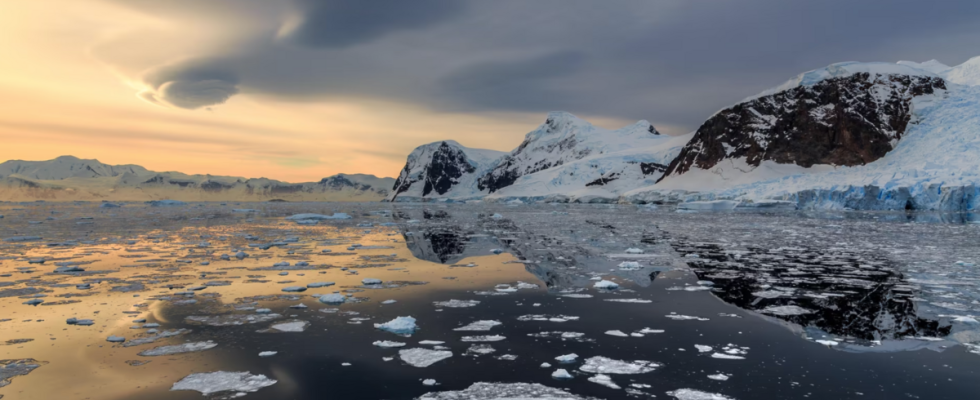A tour guide fanned himself with a fan in New York as temperatures soared to 32 degrees yesterday. With the humidity in the air, it felt more like 41 degrees, according to American media. Photo: AP
Antarctic ice has shrunk by an area almost the size of five Swedens. In addition, three more climate records have occurred this summer.
– It is startling and remarkable, says Ralf Döscher, climate scientist at SMHI to TT.
Record low ice in Antarctica, extremely warm seas and the warmest June and the warmest single day on record so far.
– Climate change gives us extremes. What is remarkable is that these are such large steps from normal, says Ralf Döscher, researcher and head of unit at the Rossby Centre, which is SMHI’s unit for climate modelling, to TT.
By mid-July, the Antarctic ice sheet had shrunk by an area almost the size of five Sweden, compared to the average value for the same month in 1981–2010. Never before has so little ice been measured in July.
The seas were also unusually warm. In June, the global surface water temperature was on average warmer than any other June recorded by the EU’s Copernicus climate service. In the North Atlantic, so far, temperatures as high as this year have never been measured for June, writes TT.
The new ocean records mean that the Earth has ended up “on unknown ground”, according to Copernicus.
– We have never had marine heat waves in this part of the Atlantic. I did not expect this, says Daniela Schmidt, professor of geosciences at the University of Bristol, to the BBC.
Off the west coast of Ireland, the surface water temperature was four to five degrees warmer than normal on several days in June. It is classified as a “beyond extreme” heat wave by the American agency NOAA.
June was the warmest June on record globally, according to Copernicus.
The previous record for the single hottest day, in terms of global average temperature, was 16.92 degrees in August 2016. But July 3 this year was even hotter. The next day the record was broken again and the same thing happened for two more days, until the record landed at 17.23 degrees on July 6. As of Thursday, the record from August 2016 had been broken 22 days in a row, according to the University of Maine.
